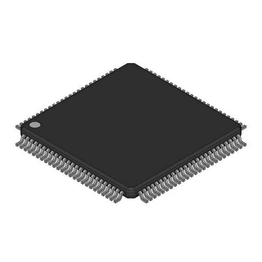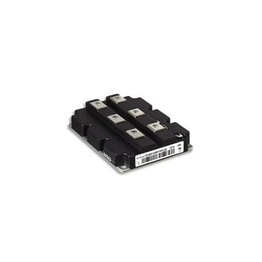How to calculate led current limiting resistor
Understanding LED Current Limiting Resistors
Overview of LED Current Limiting Resistors:
LEDs (Light Emitting DIODES) are semiconductor devices that emit light when an electric current passes through them. Unlike traditional incandescent bulbs, LEDs require a more precise control of current to function properly and avoid damage. This is where current limiting resistors come into play.
Why Use Current Limiting Resistors?
Forward Voltage and Current Ratings: Each LED has a specified forward voltage (Vf) and a maximum current rating, typically denoted in milliamperes (mA). When powered by a power supply, exceeding these ratings can lead to overheating and failure of the LED.
Voltage Sources: When connected to a power supply, the voltage may exceed the LED's forward voltage. To prevent excessive current flow that can damage the LED, a current limiting resistor is placed in series with the LED.
Voltage Regulation: The resistor helps to regulate the voltage drop across the LED, ensuring that the voltage applied by the power supply does not exceed its forward voltage rating.
When Are Current Limiting Resistors Necessary?
- Connecting LEDs Directly to Voltage Sources: If an LED is powered directly from a voltage source (e.g., a battery or power supply), a current limiting resistor is always necessary. The resistor ensures that the current flowing through the LED remains within safe limits.
- Parallel LED Configurations: When using multiple LEDs in parallel, each branch may draw different currents based on the internal resistance of each LED. To ensure uniform brightness and prolong lifespan, current limiting resistors should be used for each LED or group of identical LEDs.Thus, limiting the current through the LED with the use of a series resistor is a common and simple practice.
How to Calculate the Value of a Current Limiting Resistor:
The value of the current limiting resistor (R) can be calculated using Ohm’s Law:
[ R = \frac{(V_{supply} - V_f)}{I} ]
Where:
- ( V_{supply} ) = Supply voltage
- ( V_f ) = Forward voltage of the LED
- ( I ) = Desired current through the LED in amperes (A)
Example Calculation:
Let's say you have a 9V battery, an LED with a forward voltage of 2V, and you want it to operate at 20mA (0.02A):
[ R = \frac{(9V - 2V)}{0.02A} = \frac{7V00.02A} = 350Ω ]
You would choose a resistor value close to 350Ω, typically selecting a 360Ω resistor as a standard value.
Types of LED Drivers:
- Constant Voltage LED Drivers: These maintain a constant voltage output. Used when connecting LEDs with current limiting resistors.
- Constant Current led drivers: These adjust voltage automatically to ensure the LED receives a constant current, simplifying design as they eliminate the need for resistors.
How to Calculate LED Current Limiting Resistor Value
To calculate the LED current-limiting resistor value, follow these steps:
Step 1: Gather Required Information
You need the following values from the LED datasheet:
- Vf (LED forward voltage drop in Volts)
- i (LED forward current in Amps)
- Vs (Supply voltage in Volts)
Step 2: Convert Units
Ensure that your units are consistent:
- If you have the forward current in milliamps (mA), convert it to Amps (A) by using the conversion:
[
1 , mA = 0.001 , A
]
Step 3: Use the Resistor Calculation Formula
The formula to find the current limiting resistor (R) is derived from Ohm's Law and Kirchhoff's Voltage Law (KVL), as follows:
[
R = \frac{Vs - Vfi}
]
Where:
- (R) is the resistor value in Ohms (Ω)
- (Vs) is the supply voltage in Volts (V)
- (Vf) is the forward voltage drop of the LED in Volts (V)
- (i) is the forward current through the LED in Amps (A)
Step 4: Plug in the Values
Insert the gathered values into the formula. For example:
- If (Vs = 5 , V)
- (Vf = 1.9 , V)
- (i = 20 , mA = 0.020 , A)
The calculation would look like this:
[
R = \frac{5 , V - 1.9 , V0..020 , A} = \frac{3.1 , V0.020 \ , A} = 155 , Ω
]
Step 5: Round to a Standard Resistor Value
If you obtain a resistor value that isn't a standard resistor value, round up to the next highest common resistor value. In the example, you would use a 160 Ω resistor since it is a standard resistor value.
Step 6: Check Power Dissipation
Calculate the power dissipation across the resistor to ensure it is within safe limits:
[
P = i^2 \times R
]
Using the previous example:
[
P = (0.020 , A)^2 \times 155 , Ω = 0.0004 , A^2 \times 155 , Ω = 0.062 , W
]
This value is well within the typical power rating for a standard resistor (usually 1/4 W or 1/2 W), so it is safe to use.
Step 7: Implementing in Circuit
Now that you know the correct resistor value, you can implement the resistor in series with the LED in your circuit to limit the current and protect the LED.
Tips for Choosing and Using LED Current Limiting Resistors
- Understand the Need for Current Limiting Resistors:
- LEDs are current-driven devices, meaning they require a specific amount of current to operate safely. If the current exceeds the maximum rating (typically 20mA for standard LEDs), it can lead to thermal runaway and damage the LED. Current limiting resistors help maintain the current at safe levels.
- Know Your Specifications:
- Before selecting a resistor, gather the following specifications:
- Supply Voltage (Vsupply): The voltage of your power source.
- LED Forward Voltage (VLED): The voltage drop across the LED when it is on. This value is usually provided in the LED datasheet.
- LED Forward Current (ILED): The recommended current for the LED, also found in the datasheet.
- Use the Right Formula:
- To calculate the resistance value (R) needed for the current limiting resistor, use the formula:
[
R = \frac{Vsupply - VLEDILED}
]
- Ensure that the calculated resistance is in ohms (Ω) and adjust to the nearest standard resistor value.
- Select the Appropriate Wattage Rating:
- Calculate the power dissipated by the resistor using the formula:
[
P = ILED^2 \times R
]
- Choose a resistor with a wattage rating higher than the calculated power dissipation to ensure reliability. A common practice is to use a resistor rated for at least double the calculated power.
- Consider LED Types and Configurations:
- For series configurations, a single resistor can suffice for multiple LEDs, provided they have the same specifications.
- In parallel configurations, each LED should have its own current limiting resistor to prevent uneven current distribution, which may affect brightness and lifespan.
- Avoid Excess Voltage:
- Do not connect an LED directly to a power source if the supply voltage matches the LED forward voltage. Even slight variations can lead to excessive current. Always incorporate a resistor unless the LED is specifically designed for that voltage.
- Adjust for Other Factors:
- Temperature and aging can affect LED performance, so it's prudent to design your circuit with a margin. Choosing a slightly higher resistance can help mitigate these variations.
- Use a Multimeter:
- After building your circuit, use a multimeter to measure the actual current flowing through the LED. This will help ensure that it is within the safe operating range.
- Consider Using Constant Current Drivers:
- For more complex applications or when using multiple LEDs, consider using constant current LED drivers instead of resistors. They can maintain a consistent current regardless of fluctuations in voltage.
- Experiment and Learn:
- If you’re new to working with LEDs, practice building simple circuits with different resistor values to see how they affect LED brightness and performance. This hands-on experience will deepen your understanding of how current limiting resistors work in LED applications.
By following these tips, you can effectively choose and use current limiting resistors in your LED circuits, ensuring their longevity and optimal performance.






















